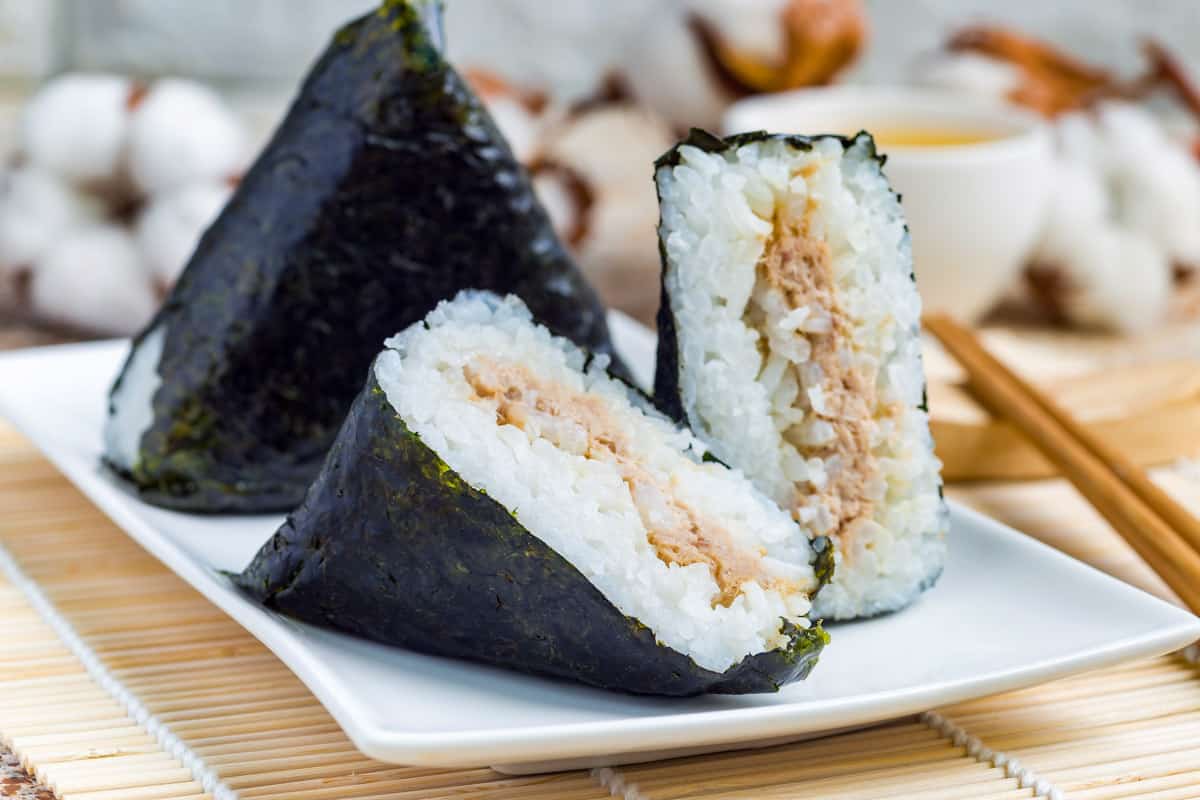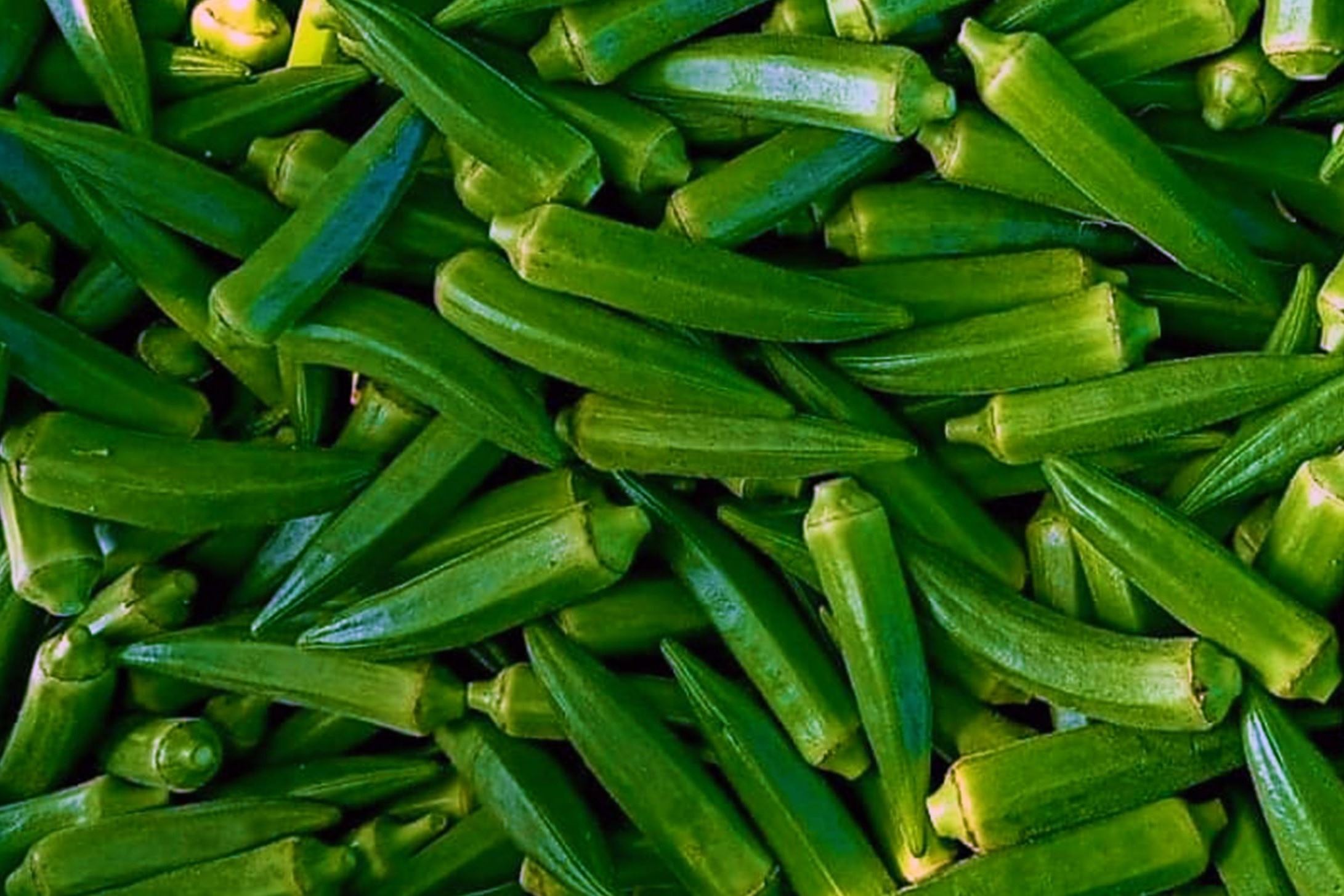Home>Food and Cooking>The Surprising Calorie Count Of Onigiri Revealed!


Food and Cooking
The Surprising Calorie Count Of Onigiri Revealed!
Published: February 7, 2024
Discover the unexpected calorie content of onigiri and learn more about food and cooking tips in this insightful article. Uncover the secrets of Japanese cuisine and make healthier choices today!
(Many of the links in this article redirect to a specific reviewed product. Your purchase of these products through affiliate links helps to generate commission for Noodls.com, at no extra cost. Learn more)
Table of Contents
Introduction
Onigiri, a beloved staple of Japanese cuisine, has gained popularity beyond its country of origin, captivating the hearts and taste buds of food enthusiasts worldwide. These delectable rice balls, often filled with savory surprises, are not only a delightful treat but also a convenient and portable snack. However, while onigiri is celebrated for its deliciousness and convenience, there's a lesser-known aspect that often surprises many – the calorie count.
In this article, we'll delve into the captivating world of onigiri, exploring its origins, ingredients, and the surprising revelations about its calorie content. Additionally, we'll uncover tips for creating healthier variations of this beloved dish without compromising on flavor. Whether you're a seasoned onigiri enthusiast or new to this delightful creation, join us on a journey to unravel the secrets of onigiri and discover how to savor it in a more health-conscious manner.
What is Onigiri?
Onigiri, a traditional Japanese dish, is a simple yet ingenious creation that has stood the test of time. Also known as omusubi, onigiri is a rice ball typically formed into a triangular or cylindrical shape, often wrapped in nori (seaweed). While its external appearance may seem unassuming, the true magic of onigiri lies within its core. The rice ball is often filled with a delectable surprise, ranging from umeboshi (pickled plum) to grilled salmon, and various other savory delights.
The art of crafting onigiri is deeply rooted in Japanese culinary history, with its origins dating back to the eighth century. Initially, onigiri served as a portable and convenient meal for travelers, samurais, and outdoor enthusiasts. Its compact and easy-to-eat form made it an ideal sustenance for those on the go.
Beyond its practicality, onigiri embodies the essence of simplicity and versatility. The basic components of onigiri – rice and nori – provide a blank canvas for culinary creativity. The rice, often seasoned with a hint of salt and rice vinegar, offers a subtle yet delightful flavor. Meanwhile, the nori adds a hint of umami and a satisfying textural contrast.
While traditional fillings such as salted salmon, pickled plum, and kombu (kelp) remain timeless favorites, modern variations have expanded the onigiri repertoire. From teriyaki chicken to spicy tuna, the fillings continue to evolve, reflecting contemporary tastes and culinary innovation.
Onigiri's enduring appeal transcends its role as a mere snack or meal. It embodies a cultural significance that resonates with the Japanese concept of omotenashi, or wholehearted hospitality. The act of crafting onigiri, whether for oneself or others, is a gesture of care and thoughtfulness, encapsulating the spirit of sharing and nourishment.
In essence, onigiri is more than just a rice ball – it is a symbol of culinary artistry, cultural heritage, and heartfelt nourishment. Its humble yet captivating nature continues to captivate food enthusiasts around the world, inviting them to savor a taste of tradition and innovation within each delightful bite.
The Ingredients of Onigiri
Crafting the perfect onigiri requires a harmonious blend of essential ingredients, each playing a crucial role in shaping its flavor, texture, and overall appeal. At its core, onigiri embodies simplicity, with its ingredients reflecting a balance of tradition and innovation.
Rice:
The foundation of onigiri is meticulously prepared Japanese short-grain rice, renowned for its sticky texture and subtle sweetness. This variety of rice, known as uruchimai, is the preferred choice for onigiri due to its cohesive nature, allowing it to be easily molded into the characteristic triangular or cylindrical shape. The rice is typically seasoned with a hint of salt and rice vinegar, imparting a delicate yet tantalizing flavor that complements the chosen fillings.
Nori (Seaweed):
A defining element of onigiri is the nori, or seaweed, which envelops the exterior of the rice ball. The nori serves multiple purposes, providing a touch of umami, a satisfying textural contrast, and a convenient means of handling the onigiri without getting one's hands sticky. The subtle brininess of the nori enhances the overall flavor profile, adding depth to each bite.
Fillings:
The heart of onigiri lies within its fillings, offering a delightful surprise with every bite. Traditional fillings such as umeboshi (pickled plum), salted salmon, and kombu (kelp) reflect the time-honored flavors of Japan. These fillings infuse the rice with distinct savory notes, creating a harmonious interplay of tastes and textures. Modern interpretations of onigiri have expanded the spectrum of fillings, incorporating ingredients such as teriyaki chicken, grilled eel, and even spicy tuna, catering to diverse palates and culinary preferences.
Seasonings:
Subtle yet essential, seasonings such as salt and rice vinegar are pivotal in enhancing the overall flavor of onigiri. The judicious application of salt lends a delicate savoriness to the rice, elevating its inherent taste. Meanwhile, rice vinegar imparts a gentle acidity, balancing the flavors and contributing to the nuanced character of the rice.
Creativity and Adaptability:
While the traditional components form the essence of onigiri, the dish's adaptability allows for endless creative possibilities. From incorporating unconventional fillings to experimenting with seasoned rice, onigiri embraces culinary innovation while honoring its heritage. This adaptability has led to the emergence of vegetarian and vegan variations, catering to diverse dietary preferences and ensuring that the joy of onigiri can be savored by all.
In essence, the ingredients of onigiri converge to create a culinary masterpiece that transcends its humble origins. With each element meticulously chosen and thoughtfully combined, onigiri embodies the art of simplicity, celebrating the beauty of minimalism and the boundless potential of culinary creativity.
The Surprising Calorie Count
Despite its seemingly modest appearance, onigiri harbors a surprising revelation when it comes to its calorie content. The exact calorie count of onigiri varies based on factors such as the type and quantity of fillings, rice seasoning, and the size of the rice ball. However, a general estimation reveals that a single onigiri can contain approximately 200 to 300 calories, making it a more substantial snack than many might anticipate.
The primary contributor to the calorie count of onigiri is the rice itself. Japanese short-grain rice, the quintessential ingredient of onigiri, is a dense source of carbohydrates, providing a significant portion of the calorie content. Additionally, the seasonings used in the rice, such as salt and rice vinegar, while adding subtle flavor, also contribute marginally to the overall calorie count.
The fillings within the onigiri play a pivotal role in determining its calorie content. While traditional fillings like umeboshi and salted salmon are relatively low in calories, modern variations featuring ingredients like teriyaki chicken or mayonnaise-based fillings can significantly elevate the calorie count. Furthermore, the quantity of filling within the onigiri influences its calorie density, with generously filled rice balls carrying a higher caloric load.
The surprising calorie count of onigiri serves as a reminder of the importance of mindful consumption. While onigiri embodies convenience and deliciousness, its calorie content underscores the significance of savoring it in moderation, especially for those mindful of their caloric intake. Moreover, for individuals seeking to maintain a balanced diet, understanding the calorie content of onigiri enables informed dietary choices, ensuring that this beloved snack can be enjoyed as part of a well-rounded eating plan.
Acknowledging the calorie count of onigiri also presents an opportunity for culinary creativity. By incorporating nutritious fillings such as vegetables, lean proteins, and legumes, it is possible to craft onigiri variations that offer a satisfying and wholesome snack without an excessive caloric burden. Embracing this approach allows individuals to relish the delightful flavors of onigiri while aligning with their dietary goals.
In essence, the surprising calorie count of onigiri serves as a gentle reminder of the balance between indulgence and mindful consumption. By understanding and appreciating the calorie content of this beloved snack, individuals can savor it with a heightened awareness of its nutritional impact, fostering a harmonious relationship between culinary enjoyment and well-being.
How to Make Healthier Onigiri
Crafting healthier versions of onigiri involves thoughtful ingredient choices and mindful preparation techniques, allowing individuals to savor this beloved dish without compromising on nutritional value. By incorporating wholesome elements and embracing culinary ingenuity, it is possible to create onigiri variations that offer a delightful balance of flavor, texture, and nourishment.
Whole-Grain Rice
Opting for whole-grain rice, such as brown rice or multigrain blends, presents a significant nutritional upgrade for onigiri. Whole-grain varieties are rich in fiber, vitamins, and minerals, offering a wholesome alternative to traditional white rice. The nutty and robust flavor of whole-grain rice adds a delightful dimension to onigiri, enhancing its overall appeal while providing essential nutrients.
Nutrient-Dense Fillings
Selecting nutrient-dense fillings is pivotal in elevating the nutritional profile of onigiri. Incorporating an array of fresh vegetables, lean proteins, and legumes not only enhances the flavor complexity but also contributes vital nutrients to the dish. Options such as steamed edamame, grilled tofu, roasted sweet potatoes, and sautéed spinach offer a wealth of vitamins, antioxidants, and protein, transforming onigiri into a nourishing and satisfying snack.
Reduced-Sodium Seasonings
Mindful seasoning choices play a crucial role in creating healthier onigiri. Opting for reduced-sodium soy sauce, tamari, or alternative seasoning blends allows for the reduction of sodium content without compromising on flavor. Additionally, exploring the use of natural seasonings such as herbs, spices, and citrus zest adds a vibrant and aromatic dimension to the rice, enhancing its taste without relying solely on salt.
Portion Control
Practicing portion control is essential in enjoying onigiri as part of a balanced diet. Crafting smaller-sized onigiri or incorporating mini onigiri variations enables individuals to savor the dish in moderation while relishing its delightful flavors. By embracing portion control, onigiri becomes a mindful and satisfying indulgence, aligning with dietary goals and promoting overall well-being.
Nourishing Variations
Embracing the diversity of onigiri fillings allows for the creation of nourishing variations that cater to individual preferences and dietary needs. From quinoa and avocado fillings to lentil and roasted vegetable combinations, the possibilities are endless. By exploring innovative fillings, onigiri becomes a canvas for culinary exploration, offering a spectrum of wholesome options that celebrate both taste and nutrition.
In essence, making healthier onigiri entails a harmonious fusion of nutrient-rich ingredients, mindful seasoning, and portion-conscious servings. By embracing whole-grain rice, nutrient-dense fillings, reduced-sodium seasonings, and portion control, individuals can savor onigiri as a delightful and nourishing addition to their culinary repertoire. This approach not only honors the cherished traditions of onigiri but also celebrates the art of wholesome and flavorful eating, inviting individuals to indulge in a culinary experience that harmonizes taste and well-being.
Conclusion
In conclusion, the captivating journey through the world of onigiri has unveiled a harmonious blend of tradition, innovation, and culinary ingenuity. From its humble origins as a portable sustenance to its modern-day status as a global culinary delight, onigiri continues to enchant enthusiasts with its simplicity, versatility, and heartfelt nourishment.
The surprising revelation of onigiri's calorie count serves as a reminder of the delicate balance between indulgence and mindful consumption. Understanding the factors that contribute to its calorie content empowers individuals to approach this beloved dish with a heightened awareness of its nutritional impact, fostering a harmonious relationship between culinary enjoyment and well-being. Moreover, the revelation of the calorie count presents an opportunity for culinary creativity, inspiring the crafting of healthier onigiri variations that offer a delightful balance of flavor, texture, and nourishment.
As we embrace the art of making healthier onigiri, we embark on a journey of culinary exploration, celebrating the diverse array of nutrient-rich ingredients, mindful seasoning, and portion-conscious servings. By infusing onigiri with whole-grain rice, nutrient-dense fillings, reduced-sodium seasonings, and a focus on portion control, we elevate this beloved dish into a nourishing and satisfying snack that aligns with our dietary goals while honoring its cherished traditions.
Ultimately, onigiri transcends its role as a mere culinary creation; it embodies a profound connection to Japanese culinary heritage, cultural significance, and the spirit of sharing and nourishment. With each delightful bite, onigiri invites us to savor a taste of tradition and innovation, embracing the art of simplicity and the boundless potential of culinary creativity.
As we partake in the delightful experience of crafting, savoring, and sharing onigiri, let us cherish the enduring legacy of this beloved dish, recognizing it as a symbol of culinary artistry, cultural heritage, and heartfelt nourishment. Whether enjoyed as a convenient snack, a thoughtful gesture, or a culinary exploration, onigiri continues to captivate the hearts and palates of individuals around the world, inviting them to partake in a timeless tradition that celebrates the joy of wholesome and flavorful eating.












